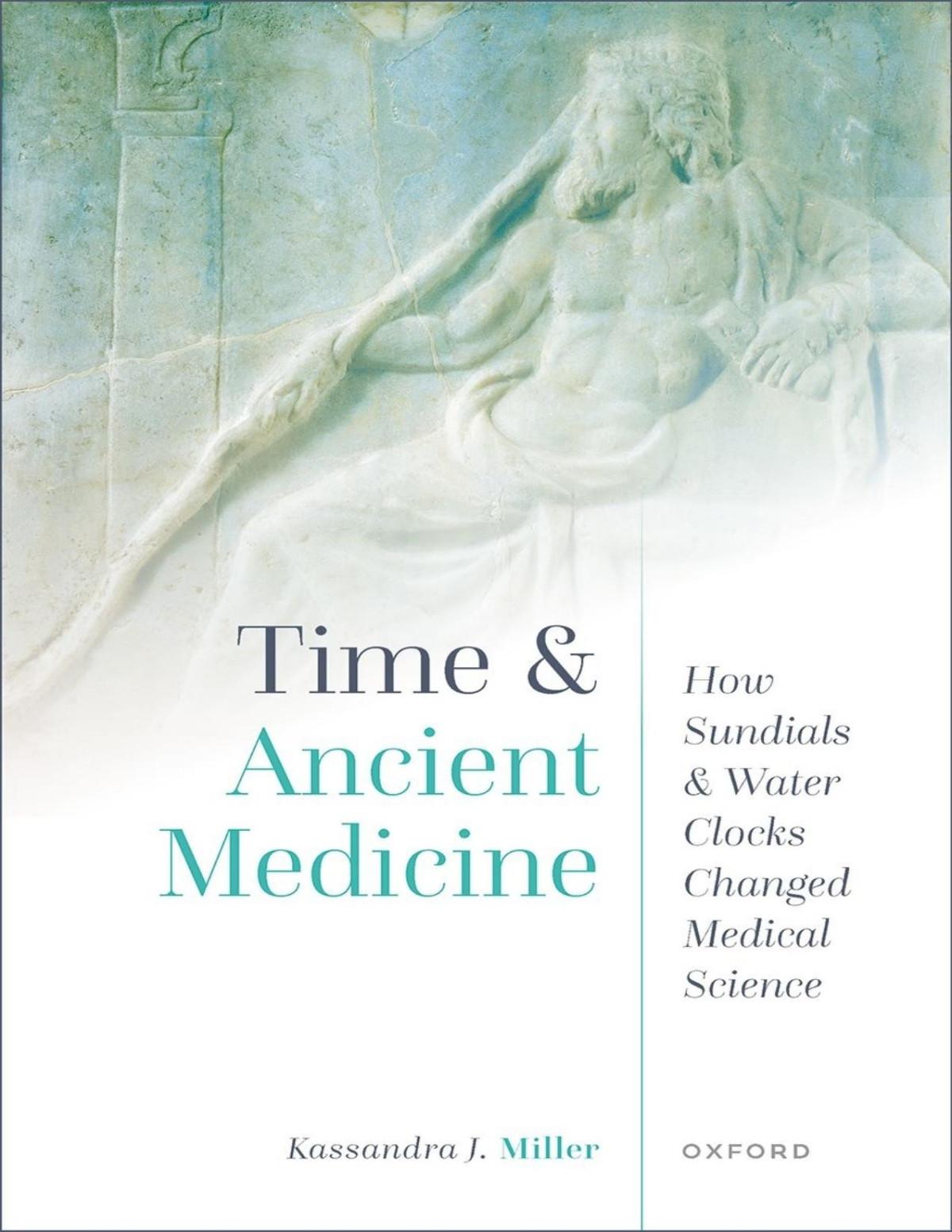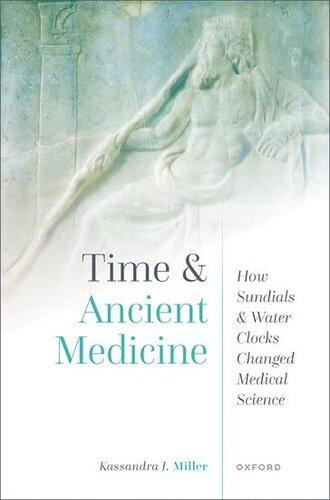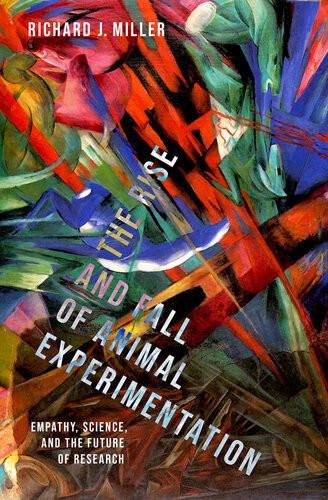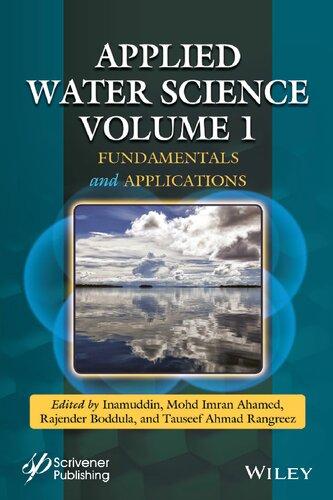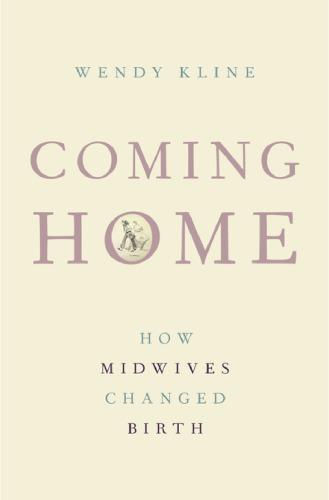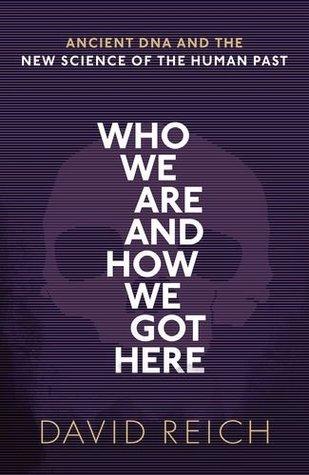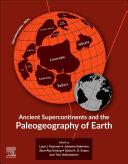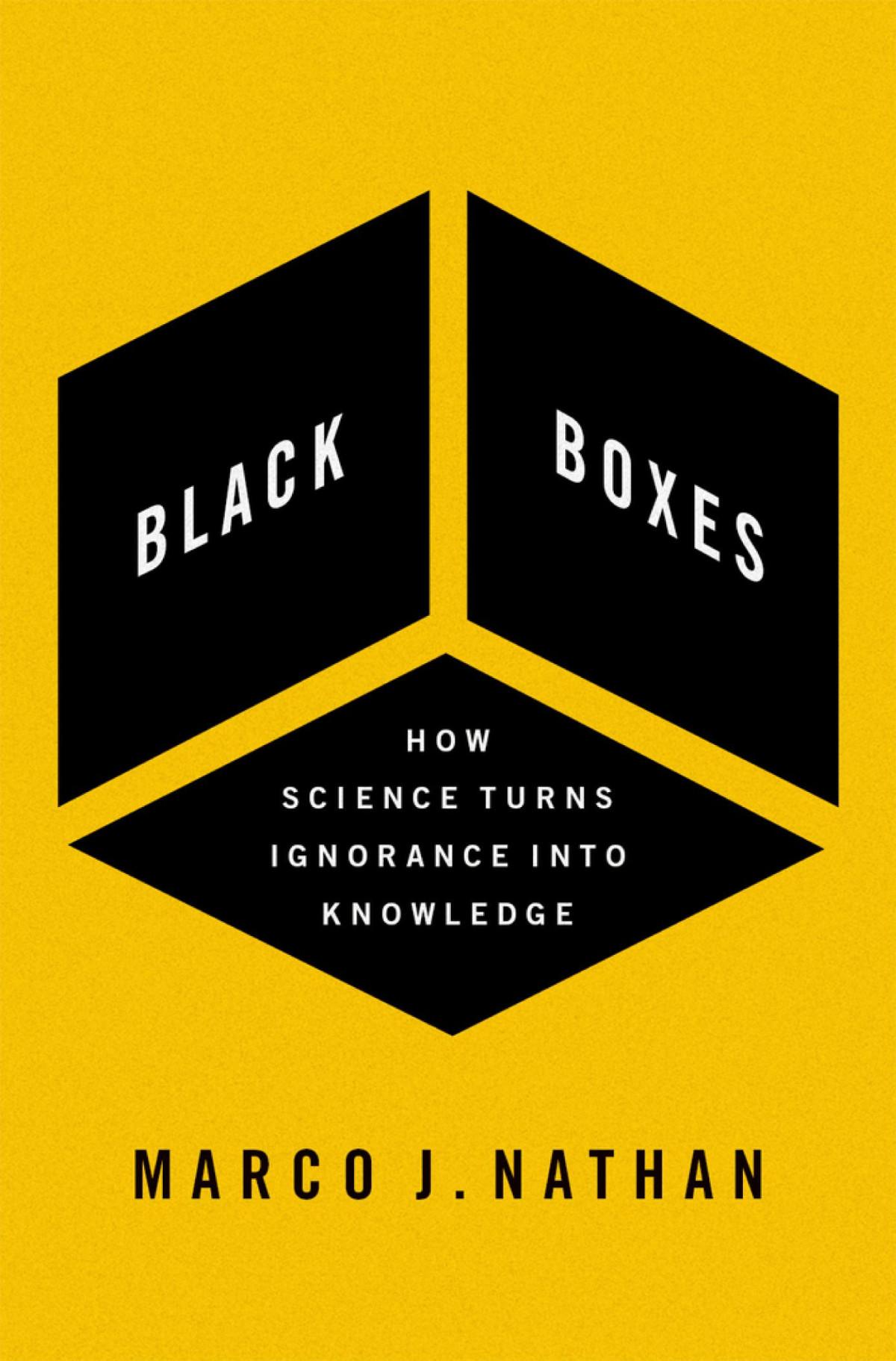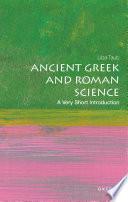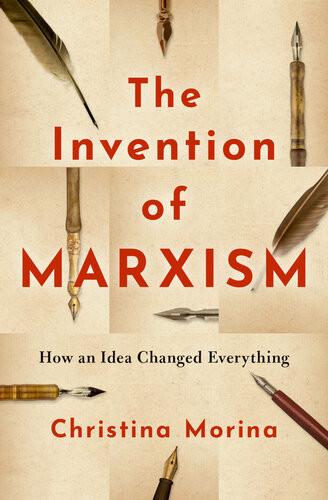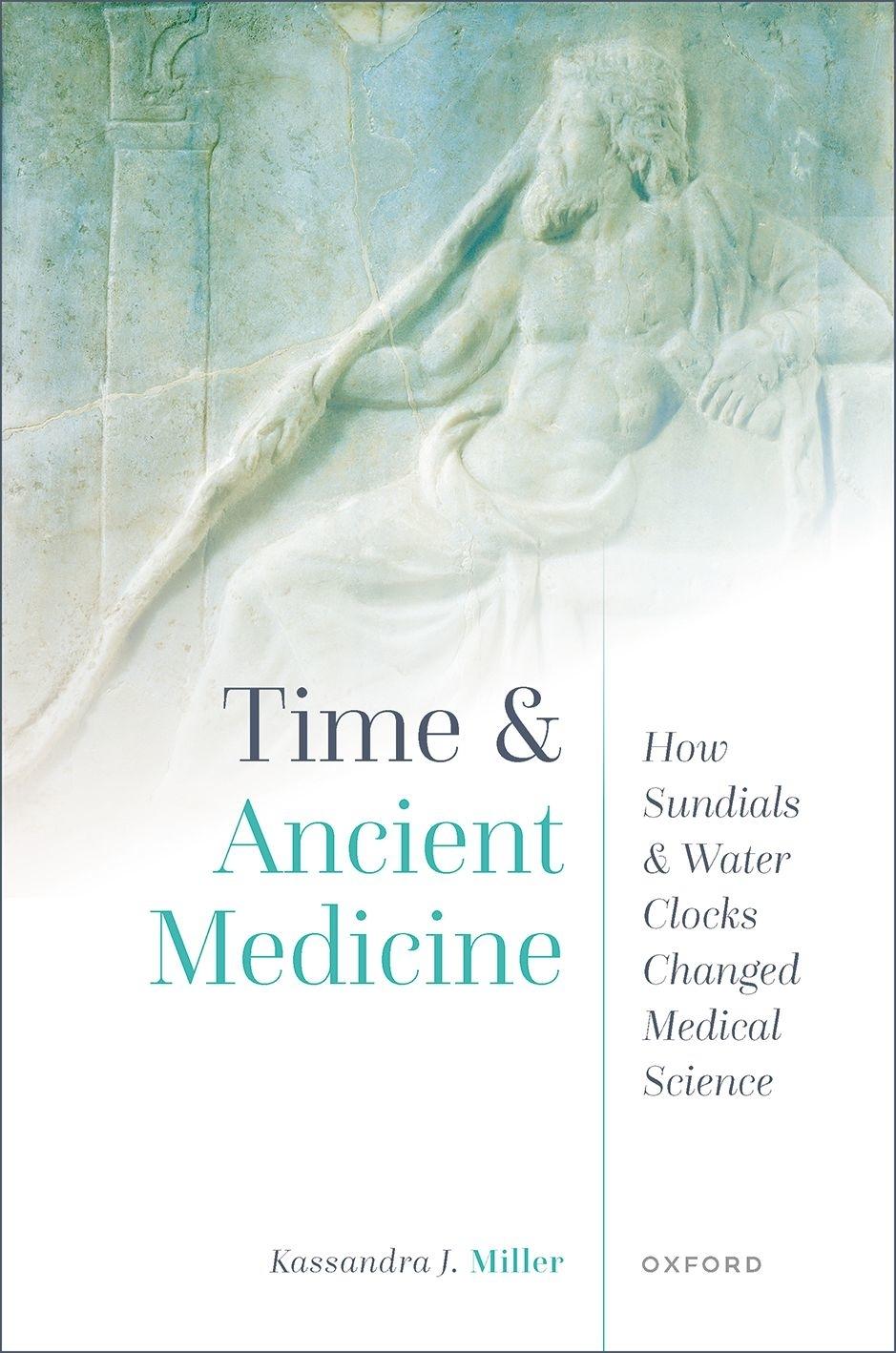Acknowledgments
Time is the most valuable thing a person can spend.
Theophrastus (DL 5.40.3–4)
It’s such a simple thing to spend time—even simpler to waste it. But making time for another person is a very different matter; it requires a tremendous amount of generosity, patience, and empathy. I cannot adequately express how grateful I am to everyone who has made time for me and for this project over the years. Your attention and support are priceless gifts, without which we could never have made it to this stage. This project had its origins in my doctoral dissertation at the University of Chicago, titled A Doctor on the Clock: Hourly Timekeeping and Galen’s Scientific Method. Thus, many fervent thanks are due to the friends, colleagues, mentors, students, administrators, and fellowship committees who inspired me to pursue this topic in the first place and provided critical support along the way. Jacqueline Feke, along with my peers within the graduate-student-run reading group on ancient technical writing, opened my eyes to the ways in which a philologist and social historian—with no professional training in medicine, science, or engineering—could nevertheless make meaningful contributions to the study of these domains in antiquity. I am also grateful to Alexander Jones for welcoming me into his seminar on ancient timekeeping at NYU’s Institute for the Study of the Ancient World, which helped to spark my enduring fascination with the social history of time, and for being a wonderful mentor ever since. I am deeply indebted to the members of my dissertation committee, Christopher Faraone, Elizabeth Asmis, Jonathan Hall, and Alain Bresson, for their guidance, support, and advocacy, and to Chris especially for his continued mentorship throughout my career. I am also thankful for my peers at UChicago—especially Paul Vadan, Bart van Wassenhove, Erika Jeck, Aimee Genova, Hannah Marcuson, and Emily Wilson—whose friendship has been invaluable, both then and now.
No dissertation can become a monograph without time, resources, and community support. I have been very fortunate to have department chairs— Stacie Raucci at Union College, Lauren Curtis at Bard College, and Kerill O’Neill at Colby College—who have fiercely guarded my research time, even when I was contingent faculty, and who helped me to locate resources to fund and facilitate my work. I am also thankful for Kathy Fox, Leahanna Pelish, and Karin Parsons, departmental administrators whose tireless work enabled me to process reimbursements, organize conferences, print materials, and navigate so many of the logistical challenges involved in bringing a book project to life. I am grateful for the writing workshops and accountability programs, such as those offered by the National Center for Faculty Development & Diversity and FORGE Fuel, that helped me to form and maintain healthy writing habits and to the museums and libraries that facilitated my research. I also owe tremendous debts of gratitude to the frontline and essential workers who helped us all survive the years of pandemic lockdown, during which the bulk of this manuscript was written; to our childcare providers (especially Caroline Stairs, Rebecca Howell, and the staff of Happy Days childcare center); and to our house cleaners (especially Sherry Harper, Carlene, and the team of Pleasant Valley Executive Cleanse & Maintenance Service). Without you, I would not have been able to work at all.
The alchemical processes by which my ideas have germinated, grown, and transmuted were catalyzed by many conferences and conversations with brilliant colleagues and students. This project and I were especially energized by the following conferences: Down to the Hour: Perspectives on Short Time in the Ancient Mediterranean, held at the University of Chicago in 2017; The Day Unit in Antiquity and the Middle Ages, hosted by the Israel Institute for Advanced Studies in 2018; Scientific Traditions in the Ancient Mediterranean and Near East, hosted by NYU’s Institute for the Study of the Ancient World in 2019; and Kairos, Krisis, Rhythmos: Time and Time Awareness in Ancient Medicine, hosted by the Einstein Center Chronoi, Berlin, in 2020. I am especially grateful to Jonathan Ben-Dov, Claire Bubb, Philip van der Eijk, Robert Germany, Sarit Kattan Gribetz, Stephan Heilen, Alexander Jones, James Ker, Paul Kosmin, Alexandra von Lieven, Candida Moss, Robert Ritner, Barbara Sattler, Anette Schomberg, Calloway Scott, Peter N. Singer, John Steele, Sacha Stern, Colin Webster, and Anja Wolkenhauer for their inspirational ideas, thoughtful suggestions,
and eagerness to collaborate. To Sarah Symons, my co-editor of Down to the Hour and now dear friend: you have had a tremendous impact on me, as a researcher, as an educator, and as a person. I can’t thank you enough. Finally, I am profoundly grateful to my father, Kenneth Jackson, for curating countless reading lists for me in the philosophy of science and medicine. Those works, and our conversations about them, have shaped my thinking in enduring and deeply generative ways.
At a certain stage, of course, ideas have to be anchored in text, and this text has received the careful attention of many eyes, hands, and minds. I am deeply grateful to the colleagues and family members who volunteered their time to read and respond to drafts of this project—Claire Bubb, Glen Cooper, Deborah Jackson, Kenneth Jackson, Alexander Jones, Paul Keyser, Susan Mattern, Peter N. Singer, Richard Talbert, and Colin Webster—and to the anonymous reviewers of the press. These readers’ thoughtful suggestions have improved the book immensely, and any infelicities that remain are, of course, nobody’s fault but my own
When this book was out for review, I was fortunate to discover that Peter N. Singer had completed a draft of his monograph, Time for the Ancients (De Gruyter, 2022), which also uses the Galenic corpus as a jumping-off point for pursuing questions about time, medicine, and society in ancient Rome, albeit from different perspectives than those adopted here. I am very grateful to Peter for generously sharing and discussing his draft with me and greatly enriching my own thinking. Hearty thanks are also due to my undergraduate research assistant, Sarah Haynes, who meticulously organized this book’s primary sources and offered helpful feedback on the work as a whole.
I am especially grateful to Charlotte Loveridge, Jamie Mortimer, and Cathryn Steele of Oxford University Press for seeing the potential in this project and helping to accomplish its final transformation, from manuscript into book. Many thanks are due, as well, to the scholars and institutions who supplied this book’s images and, in particular, to my father, Kenneth Jackson, for preparing two original line drawings. It means so much to me to be able to collaborate with you like this and to share your artistic talents with this book’s readers.
Lastly—and first and always—I am infinitely grateful for my family, those magical beings who can make any place a home and any moment momentous. Kristin Mahan, Jessica Kwong, Valerie Love, Rachael
Richman, and Katie Ryan, thank you for always inspiring me and being there through thick and thin. Heidi, Brian, Max, Julie, and Izzie, I am so honored to be a part of your family and grateful for the love and openness with which you’ve welcomed me. Mom and Dad, thank you for loving me unconditionally, being my role models and cheerleaders, and always making the time. Jon and Riley, our wonder girl, thank you for helping me to look past the time and savor the moment. I love you beyond measure.
Contents
List of Figures
List of Tables
Abbreviations
Introduction
PART I. CLOCKWORKS
Telling Time in the Greco-Roman World
Telling Time without Clocks
Hours
Sundials
Water Clocks
Conclusion
2.
Doctors and Clocks: The Emergence of Hourly Timekeeping in Medical Contexts
Egyptian and Assyro-Babylonian Precedents
Hippocratic Evidence
Hellenistic Evidence
The Roman Period
3.
Clocks as Symbols 1: In Galen’s Thought
Galen’s Chronotopic Biography
Introducing Affections and Errors
Galen’s Scientific Method
Defending Propositions 1a and 1b: Testability
Defending Propositions 2a and 2b: Useful Contributions to Intellectual and Civic Communities
Defending Propositions 3a and 3b: Progress and Perpetuity
Conclusion
Clocks as Symbols 2: Among the Roman Elite
A Very Public Gnomon: Timekeeping and the Imperial Program
Clocks and Celestial Geometry: Symbols of Mathematical Ingenuity
Clocks and the Educated Elite: Symbols of the Pepaideumenoi
Clocks and Philosophers: Symbols of the Human Lifespan
Clocks in Architectural Writing: Symbols of the Human Body
Clocks and Horoscopic Astrology: Symbols of Death and the Afterlife
Conclusion: The “Clock-Construction” Lifestyle
PART II. HOURS IN ACTION
From “Season” to “Hour”: Galenic Refinements of the Hippocratic Hōra
Galen’s Hippocratism
Galen’s On Critical Days and the Hippocratic Epidemics
Temporality in Galen’s Fever Case Histories
Hours and Astronomy I: The Period of the Moon
Hours and Astronomy II: The Periods of Planets
Conclusion
When Is Temporal Exactitude Desirable?
Insufficient Exactitude: Fevers and Symptoms
Excessive Exactitude: Fevers and Phlebotomy
Conclusion
“Right Timing” in Sickness and in Health: Hourly Timekeeping and Kairos in Galen’s On Hygiene
Kairos and Galen’s Predecessors
Kairos and Febrile Disease
Kairos and Health Maintenance
Kairos and the Elderly
Conclusion
Conclusion: From Antiquity to Modernity
Bibliography Index
B.
C.
D.
E.
F
G.
H.
I.
J.
List of Figures
Portable cylindrical sundial, Tomb of the Physician, Este, Italy. Museo Nazionale Atestino di Este: IG MNA 15397. Photograph by Guido Petruccioli with permission from the Museum Atestino di Este.
Schematic of sundial hour-lines and day-curves. Modeled after a marble conical dial from Pompeii (Berlin Sundial Collaboration, Ancient Sundials, Dialface ID 174, Napoli, 2014, Edition Topoi, DOI: 10.17171/1-1-2199). Image © Kenneth Jackson. Roman mosaic depicting a thinker, possibly Anaximander, with a sundial. Image © GDKE/Rheinisches Landesmuseum Trier, Inv. No. 1907,724, photographer Th. Zühmer.
Statuette of grieving slave with sundial, Necropolis, Myrina, Greece. National Archaeological Museum, Athens: 5007/D.95. Image © Institute for the Study of the Ancient World, photographer Orestis Kourakis.
A schematic representation of the Montecitorio obelisk acting as a meridian dial. Image © Kenneth Jackson.
Roofed spherical sundial with Greek inscriptions. Inv. MA5074. Image © RMN-Grand Palais/Art Resource, NY, photographer Hervé Lewandowski.
Gem with sitting, reading thinker in front of a sundial. Staatliche Münzsammlung, Munich, Inv. A.197. Reproduced with permission from J. Lang, Mit Wissen geschmückt? Zur bildlichen Rezeption griechischer Dichter und Denker in der römischen Lebenswelt, MAR 39 (Wiesbaden 2012), 170, Abb. 165, Kat. Nr. G TypA65, Taf. 21. Image © Köln Digital Archaeology Laboratory, photographer Jörn Lang.
Muse sarcophagus. Detail of side panel, depicting a seated “philosopher” looking up at a sundial. Image © KHM-Museumsverband.
Detail of Prometheus sarcophagus. Capitoline Museum, Inv. 638. Image © Shutterstock.
Mosaic depicting a man looking at a sundial, Daphne. Image © NPL—De Agostini Picture Library/Bridgeman Images.
List of Tables
The pattern of paroxysms patient experienced in the first five days. The paroxysms of Galen’s Tertian 1.
Aen. Tact.
Aët. Amid.
Libr. med.
Alc.
Alex. Aphr.
In Top
Arr
Epict.
De bell. Afr.
De bell. Hisp.
Anth. Graec.
Antyl.
Ar
Ach.
Ekk.
Arist.
Gen. an. Pol.
Nic. eth.
Aristid.
Hier. log.
Artem.
Oneir.
Ath. Deipn.
Aul. Gell.
NA
M. Aur.
Abbreviations
Ancient Authors
Aeneas Tacticus
Aëtius of Amida
Libri medicinales
Alciphron
Alexander of Aphrodisias
In Aristotelis Topica commentaria
Arrian
Epicteti dissertationes
De bello Africo
De bello Hispaniensi
Anthologia Graeca
Antyllus
Aristophanes
Acharnenses
Ekklesiazousai
Aristotle
De generatione animalium
Politica
Ethica Nicomachea
Aelius Aristides
Hieroi logoi
Artemidorus
Oneirocritica
Athenaeus
Deipnosophistae
Aulus Gellius
Noctes Atticae
Marcus Aurelius
Med.
Cael. Aur.
Tard. pass.
Caes.
Gall.
Civ
Callim.
Catull.
Cens.
DN
Cic.
De nat. deor
Rep.
Sen.
Tusc.
Verr
Dig.
Dio Cass.
Diod. Sic.
DL
Gal.
Hist. Aug. Had.
Hdt.
Hes.
WD
Hippoc.
Aer.
Aph.
De morb.
Epid.
Int.
Nat. hom.
Prisc. med.
Reg.
Vict.
Hist. Aug.
Had.
Hor.
Serm.
Meditationes
Caelius Aurelianus
Tardae passiones
Caesar
De bella Gallica
De bella civile
Callimachus
Catullus
Censorinus
De die natali
Cicero
De natura deorum
De republica
De senectute
Tusculanae disputationes
In Verrem
Digesta
Dio Cassius
Diodorus Siculus
Diogenes Laertius
Galen [see Titles and Abbreviations of Works Attributed to Galen]
Historia Augusta: Hadrianus
Herodotus
Hesiod
Opera et dies
Hippocrates
De aere aquis et locis
Aphorismi
De morbis
Epidemiae
De internis affectionibus
De natura hominis
De prisca medicina
De diaeta in morbis acutis
De victu
Historia Augusta
Vita Hadriani
Horace
Sermones
Juv.
Sat.
Luc.
Hipp.
Marcellin.
Puls.
Mart.
Epig.
Orib.
Coll. med.
Paus.
Pers.
Petron.
Sat.
Pl.
Gorg.
Phaedr
Prot.
Rep.
Ti.
Plb.
Plin.
Ep.
NH
Plut.
Per.
Philostr.
Im.
Ptol.
Anal.
Sen.
Brev.
Clem.
Const.
Ep.
Ira
Otio
Tranq.
Sext. Emp.
Juvenal
Satires
Lucian
Hippias
Marcellinus
De pulsibus
Martial
Epigrammata
Oribasius
Collectiones medicae
Pausanias
Persius
Petronius
Satyricon
Plato
Gorgias
Phaedrus
Protagorus
Respublica
Timaeus
Polybius
Pliny
Epistulae
Historia naturalis
Plutarch
Pericles
Philostratus
Imagines
Ptolemy
Analemma
Seneca
De brevitate vitae
De clementia
De constantia sapientis
Epistulae
De ira
De otio
De tranquillitate animi
Sextus Empiricus
Math.
Sid. Apoll.
Epist.
Simpl.
In Phys
Sor
Gyn.
Vit. Hipp.
Stob.
Ecl.
Strab.
Geog.
Suet.
Aug.
Tib.
Vit.
Tac.
Ann.
Hist.
Thess.
De virt. herb.
Ulp.
Mos. et Rom. legum coll.
V. Max.
Varr.
Ling.
Verg.
Aen.
Vitr
De arch.
Xen.
An.
Mem.
Adversus mathematicos
Sidonius Apollinaris
Epistulae
Simplicius
In Aristotelis de Physica commentarii
Soranus
Gynaecia
Vita Hippocratis
Stobaeus
Ἐ
Strabo
Geographica
Suetonius
Vita Augustae
Vita Tiberii
Vita Vitellii
Tacitus
Annales
Historiae
Thessalus of Tralles
De virtutibus herbarum
Ulpian
Collatio legum Mosaicarum et Romanarum
Valerius Maximus
Varro
De lingua Latina
Vergil
Aeneid
Vitruvius
De architectura
Xenophon
Anabasis
Memorabilia
Titles and Abbreviations of Works Attributed to Galen
Abbreviation Latin Title
English Title
AA De anatomicis administrationibus On Anatomical Procedures
Adv. Jul. Adversus Julianum Against Julian
Adv. Lyc. Adversus Lycum Against Lycus
Adv. typ. scr. Adversus eos qui de typis scripserunt
Aff. pecc. dig. De propriorum animi cuiusque affectuum dinotione et curatione; De animi cuislibet peccatorum dignotione et curatione
Alim. fac. De alimentorum facultatibus
Against Those Who Have Written on Types (or On Periods)
On the Diagnosis and Treatment of the Affections and Errors of the Individual Human Soul (or Affections and Errors)
On the Properties of Foodstuffs
Ant. De antidotis On Antidotes
[An. ut.] An animal sit quod in utero geritur
Ars med. Ars medica
Whether What is in the Womb is an Animal
The Art of Medicine
Art. sang. An in arteriis natura sanguis contineatur Whether Blood is Naturally Contained in the Arteries
At. bil. De atra bile
Bon. hab. De bono habitu
Bon. mal. sac. De bonis malisque succis
CAM De constitutione artis medicae
[Cath. med. purg.] Quos, quibus catharticis medicamentis et quando purgare oporteat
Caus. cont. De causis contentivis
On Black Bile
On Good Condition
On Good and Bad Juices
On the Composition of the Art of Medicine
Whom to Purge, with What Cleansing Drugs and When
On Containing Causes
Caus. morb. De causis morborum On the Causes of Disease
Caus. proc. De causis procatarcticis On Antecedent Causes
Caus. puls. De causis pulsuum
Caus. resp. De causis respirationis
On the Causes of the Pulse
On the Causes of Breathing
Caus. symp. De causis symptomatum On the Causes of Symptoms
Comp. med. gen. De compositione medicamentorum per genera
Comp. med. loc. De compositione medicamentorum secundum locos
On the Composition of Medications According to Kind
On the Composition of Medications According to Places
Cons. De consuetudinibus On Habits
Cris. De crisibus On Crises
Cur. rat. ven. sect. De curandi ratione per venae sectionem On Treatment by Venesection
[Def. med.] Definitiones medicae
Medical Definitions
Dem. De demonstration On Demonstration
Di. dec. De diebus decretoriis
Di. Hipp. morb. ac.
On Critical Days
De diaeta Hippocratis in morbus acutis On Hippocrates’ Regimen in Acute Diseases
Diff. feb. De differentiis febrium
Diff. morb. De differentiis morborum
Diff. puls. De differentiis pulsuum
Diff. resp. De difficultate respirationis
Dig. insomn. De dignotione ex insomniis
Dig. puls. De dignoscendis pulsibus
Elem. De elementis ex Hippocrate
Fasc. De fasciis
Foet. form. De foetuum formation
Gal. fasc. Ex Galeni
On the Distinct Types of Fever
On the Distinct Types of Disease
On the Distinct Types of Pulse
On Difficulty in Breathing
On Diagnosis by Dreams
On Diagnosing Pulses
On the Elements According to Hippocrates
On Bandages
On the Formation of the Fetus
From Galen’s Notes
Gloss. Glossarium Hippocratic Glossary
[Hipp. Alim.] In Hippocratis De alimento
Hipp. Aph. In Hippocratis Aphorismos
Hipp. Art. In Hippocratis De articulis
Hipp. AWP In Hippocratis De aere aquis et locis
Commentary on Hippocrates’ Nutrition
Commentary on Hippocrates’ Aphorisms
Commentary on Hippocrates’ On Joints
Commentary on Hippocrates’ Airs Waters Places
Hipp. Com. De comate secundum Hippocratem Coma According to Hippocrates
Hipp. Epid. 1 In Hippocratis Epidemiarum 1
Hipp. Epid. 2 In Hippocratis Epidemiarum 2
Hipp. Epid. 3 In Hippocratis Epidemiarum 3
Hipp. Epid. 4 In Hippocratis Epdemiarum 4
Hipp. Fract. In Hippocratis De fracturis
[Hipp. Hum.] In Hippocratis De humoribus
[Hipp. Ius] In Hippocratis Ius
Hipp. Off. med. In Hippocratis De officina medici
Hipp. Prog. In Hippocratis Prognosticum
Hipp. Prorrh. In Hippocratis Prorrheticon
[Hipp. Sept.] In Hippocratis De septimanis
Hipp. Vict. In Hippocratis De victu
Commentary on Hippocrates’ Epidemics 1
Commentary on Hippocrates’ Epidemics 2
Commentary on Hippocrates’ Epidemics 3
Commentary on Hippocrates’ Epidemics 4
Commentary on Hippocrates’ Fractures
Commentary on Hippocrates’ Humors
Commentary on Hippocrates’ Oath
Commentary on Hippocrates’ Surgery
Commentary on Hippocrates’ Prognostic
Commentary on Hippocrates’ Prorrhetic
Commentary on Hippocrates’ Sevens
Commentary on Hippocrates’ Regimen
[Hipp. Vict. morb.]
De victu ratione in morbis acutis ex Hippocratis sententia
[Hist. phil.] Historia philosophica
HNH In Hippocratis De natura hominis
HRCIS De hirundinibus, revulsione, cucurbitula, incisione et scarificatione
[Hum.] De humoribus
HVA In Hippocratis De victu in morbis acutis
Inaeq. int. De inaequali intemperie
Ind. De indolentia
Inst. log. Institutio logica
Inst. od. De instrumento odoratus
[Int.] Introductio seu medicus
Lib. prop. De libris propriis
Loc. aff. De locis affectis
Marc. De marcore
Med. exp. De experientia medica
[Mel.] De melancholia
MM De methodo medendi
for Health
On Regimen in Acute Diseases According to Hippocrates
History of Philosophy
Commentary on Hippocrates’ Human Nature
On Leeches, Revulsion, Cupping, Incision, and Scarification
On Humors
Commentary on Hippocrates’ Regimen in Acute Diseases
Uneven Bad Mixture
On Avoiding Distress
Introduction to Logic
The Organ of Smell
Introduction
My Own Books
On Affected Places
On Marasmus
On Medical Experience
On Melancholy
On the Method of Healing
MMG De methodo medendi ad Glauconem On the Method of Healing, for Glaucon
Mor De moribus
On Character Traits
Morb. temp. De morborum temporibus On Opportune Moments in Disease
Mot. dub. De motibus dubiis
Mot. musc. De motu musculorum
Musc. diss. De musculorum dissectione
Nat. fac. De facultatibus naturalibus
Nerv. diss. De nervorum dissectione
Nom. med. De nominibus medicis
On Problematical Movements
On the Movement of Muscles
On the Anatomy of the Muscles
On Natural Faculties
On the Anatomy of the Nerves
On Medical Terminology
Opt. const. corp. De optima corporis constitutione On the Best Constitution of our Bodies
Opt. doct. De optima doctrina
Opt. med. Quod optimus medicus sit quoque philosophus
On the Best Method of Teaching
That the Best Doctor is also a Philosopher
Opt. med. cogn. De optimo medico cognoscendo On Discovering the Best Physician
[Opt. sect.] De optima secta
On the Best Sect
Ord. lib. prop. De ordine librorum propriorum
On the Order of My Own Books
Oss. De ossibus ad tirones On Bones for Beginners
Part. art. med. De partibus artis medicae
On the Parts of the Art of Medicine
Part. hom. diff. De partium homoeomerium differentia On the Difference Between Uniform Parts
Parv. pil. De parvae pilae exercitio On Exercise with the Small Ball
PHP De placitis Hippocratis et Platonis On the Opinions of Hippocrates and Plato
Plat. Tim. In Platonis Timaeum
Commentary on the Medical Statements in the Timaeus
Plat. Tim. comp. Timaei Platonis compendium Compendium of Plato’s Timaeus
Plen. De plenitudine On Fulness
[Pond. mens.] De ponderibus et mensuris On Weights and Measures
Praec. De praecognitione ad Epigenem On Prognosis, for Epigenes
Praen. De praenotione On Prognosis
Praes. puls. De praesagitione ex pulsibus On Prognosis from the Pulse
[Praes. ver. exp.]
De praesagitione vera et experta On True and Expert Prognosis
[Prog. dec.] Prognostica de decubitu ex mathematica scientia
Prognosis Based on the Hour When a Patient Goes to Bed Based on the Science of Astrology
Prolaps. De humero iis modis prolapso quos Hippocrates non vidit On Dislocations Unseen by Hippocrates
Prop. plac. De propriis placitis
On My Own Opinions
Protr Protrepticus An Exhortation to Study the Arts
Ptis. De ptisana On Barley Gruel
Puer. epil. Puero epileptico consilium Advice for an Epileptic Boy
Puls. De pulsibus ad tirones On Pulses for Beginners
[Puls. Ant.] De pulsibus ad Antonium On Pulses, for Antonius
Purg. med. fac. De purgantium medicamentorum facultatibus On the Property of Purgatives
QAM Quod animi mores corporis temperamenta sequantur That the Soul’s Behavior Depends on Bodily Mixtures
[Qual. incorp.] De qualitatibus incorporeis On Non-corporeal Qualities
[Rem.] De remediis parabilibus On Readily Available Remedies
[Ren. aff.] De renum affectibus On Affections of the Kidneys
San. tu. De sanitate tuenda
On Hygiene
Sect. De sectis ad eos qui introducuntur On Sects for Beginners
Sem. De semine On Semen
Sept. part. De septimestri partu On Seven-month Children
Sim. morb. Quomodo simulantes morbum deprehendendi
How to Detect Malingerers
SMT De simplicium medicamentorum facultatibus On the Properties of Simple Drugs
Soph. De sophismatibus penes dictionem On Linguistic Sophisms
Sub. nat. fac. De substantia facultatum naturalium On the Substance of the Natural Faculties
Subf. emp. Subfiguratio empirica
A Sketch of Empiricism
[Suc.] De succedaneis On Substitute Drugs
Symp. diff. De symptomatum differentiis
Syn. puls. Synopsis de pulsibus
On the Distinct Types of Symptom
A Synopsis of the Pulse
Temp. De temperamentis On Mixtures
[Ther Pamph.]
De theriaca ad Pamphilanum
On Theriac, for Pamphilianus
[Ther. Pis.] De theriaca ad Pisonem On Theriac, for Piso
Thras. Thrasybulus sive Itrum medicinae sit aut gymnasticae hygiene
Tot. morb.
Thrasybulus or Whether Hygiene Belongs to Medicine or Physical Training
temp. De totius morbi temporibus On Opportune Moments in Diseases as a Whole
Trem. palp. De tremore, palpitatione, convulsione, et rigore On Tremor, Spasm, Convulsion, and Shivering
Tum. pr. nat. De tumoribus praeter naturam
On Unnatural Swellings
Typ. De typis On Types
UP De usu partium
On the Use of Parts of the Body
[Ur.] De urinis On Urines
[Ur. comp.] De urinis compendium
[Ur. comp. Gal.] De urinis ex Hippocrate, Galeno
Us. puls. De usu pulsuum
Us. resp. De usu respirationis
Ut. diss. De uteri dissection
[Ven.] De venereis
A Synopsis of Urines
A Synopsis of Urines, according to Hippocrates, Galen
On the Use of the Pulse
On the Use of Breathing
On the Anatomy of the Womb
On Sexual Activity
Ven. art. diss. De venarum arteriarumque dissectione On the Anatomy of Veins and Arteries
[Ven. sect.] De venae sectione On Venesection
Ven. sect. Er De venae sectione adversus Erasistratum On Venesection, Against Erasistratus
Ven. sect. Er. Rom.
De venae sectione adversus Erasistrateos Romae degentes
Vict. att. De victu attenuante
[Virt. cent.] De vertutibus centaureae
Voc. De voce
AE
ÄM
BM
CIL
DB
Gardner
Gibbs
I.Aeg. Thrace
ID
IEph
IG
IGUR
ILS
IPriene
K
L
LBAT
On Venesection, Against the Erasistrateans in Rome
On the Thinning Diet
On the Properties of Centaury
On the Voice
Reference Works and Editions
1889–2016. L’Année épigraphique. Paris: Presses Universitaires de France.
Ägyptisches Museum und Papyrussammlung, Berlin, museum siglum.
British Museum, London, museum siglum.
1862–. Corpus Inscriptionum Latinarum. Berlin: De Gruyter et al.
De Boer, W 1937. Galeni de animi cuiuslibet affectuum et peccatorum dignotione et curatione Corpus Medicorum Graecorum 5.4.1.1. Leipzig: Teubner
Gardner, P 1882. The Types of Greek Coins. Cambridge: Cambridge University Press.
Gibbs, S. L. 1976. Greek and Roman Sundials. New Haven: Yale University Press.
Loukopoulou, L. D., et al. 2005. Epigraphes tēs Thrakēs tou Aigaiou: metaxy tōn potamōn Nestou kai Hevrou (nomoi Xanthēs, Rhodopēs kai Hevrou) Athens: Ethnikon Hidryma Ereunōn, Kentron Hellēnikēs kai Rōmaikēs Archaiotētos.
Durrbach, F., et al. 1926–72. Inscriptions de Délos, I–VII Paris: H. Champion.
Wankel, H., et al. 1979–84. Die Inschriften von Ephesos, IGSK 11–17. Bonn: R. Habelt.
1903–. Inscriptiones Graecae. Berlin: De Gruyter et al.
Moretti, L. 1968–90. Inscriptiones Graecae Urbis Romae. Rome: Istituto italiano per la storia antica.
Dessau, H. 1892–1916. Inscriptiones Latinae Selectae. Berlin: Weidmann.
Blümel, W., and R. Merkelbach. 2014. Die Inschriften von Priene. Bonn: Habelt.
Kühn, K. G. 1821–33. Claudii Galeni Opera Omnia. Leipzig: C. Knobloch
Littré, E. 1839–61. Oeuvres completes d’Hippocrate. Paris: Baillière. Pinches, T G., and J. N. Strassmaier, eds 1955. Late Babylonian Astronomical and Related Texts Providence, RI: Brown University Press.
P. Oxy.
P. Coll. Youtie
SEG
SNG von Aulock
TLG
Liddell, Scott, and Jones Greek-English Lexicon online Museo Archeologico Nazionale di Napoli, museum siglum 1876–1914, 1952–. Mitteilungen des deutschen archäologischen Instituts, Athenische Abteilung. Berlin: De Gruyter et al. The Oxyrhynchus Papyri
A. E. Hanson, ed. 1976. Collectanea Papyrologica: Texts Published in Honor of H.C. Youtie. Bonn: Habelt. 1923–. Supplementum Epigraphicum Graecum. Brill: Leiden.
Von Aulock, H. 1957–67. Sylloge Nummorum Graecorum Berlin: Mann.
Thesaurus Linguae Graecae online database
Introduction
Imagine a future in which every prescription carries a time stamp, and even an over-thecounter remedy such as Paracetamol (Tylenol), profoundly rhythmic in its liver toxicity, sports a label with timing instructions. Next to your blood type, your medical records could include your chronotype, which your work hours also reflect. Junk food would carry a warning about late-night consumption.1
This vision of the future, offered by science writer J. Gamble in 2016, reflects the fact that Western biomedical professionals have become keenly interested in how human bodies perform differently at different times of day and night. This field of medical research, known as chronobiology, investigates how molecular “clocks” orchestrate the rhythms and cycles within us. The “settings” of these molecular clocks vary from person to person, leading some people, for example, to be described as “early birds” or “night owls,” or to experience varying degrees of jet lag when adjusting to a new time zone. Molecular clocks can also affect the outcomes of medical treatments. For instance, the rate at which a patient’s body processes a medication will, according to this new research, vary depending on that patient’s “chronotype” and on the exact time of day at which the medicine was taken. Gamble’s vision of the future, projecting outward from current trends in chronobiology, proposes that one day people might be as familiar with their chronotypes as they are with their blood types, and that knowledge of one’s chronotype might be used to create medical, dietary, fitness, and work regimens that are precisely timed and specially tailored. The idea of using high-precision timekeeping instruments to synchronize human behaviors with natural rhythms and periodicities may strike us as exceedingly modern, perhaps bordering on the realm of science fiction. This book, however, argues that many current chronobiological ideas are not entirely new. In fact, ancient physicians hotly debated the role of “clocks”—whether those inside us or those external to us, such as celestial bodies or sundials—within medical theory and practice. Both ancient and
modern debates on this topic intersect with a constellation of other issues: to what extent should medicalized time be expressed in numerical rather than qualitative terms? To what extent must medicalized time be standardized? And what degrees of precision and accuracy are medically useful or justified?2
This book chronicles how, in the Greek- and Latin-speaking worlds, healers’ answers to these questions changed over time and from context to context. In the fifth and fourth centuries BCE, the Hippocratics developed practices (potentially adapted from Assyro-Babylonian and Pharaonic Egyptian approaches to predictive healing) that relied on tracking the temporal trajectories of diseases, and these practices coincided with a burgeoning societal interest in timekeeping and calendrics. It is in this period, the late Classical and early Hellenistic, that sundials, water clocks, and references to numbered hours first appear in our textual and archaeological records. Yet, at the time, these tools remained relatively rare, and there was little consensus among healers about whether and how to employ them. A timekeeping revolution, which originated in the middle Hellenistic period and solidified under the Roman Empire, saw a dramatic increase in the ubiquity and standardization of timekeeping devices. This technological revolution, in turn, helped to generate new ways to use time in medical diagnosis, prognosis, and therapeutics. The temporal parameters of this book were dictated by the availability of evidence for hourly timekeeping. Thus, while the book considers material from circa 400 BCE–300 CE produced by a range of authors writing within many regions that came under Roman rule, it focuses primarily on material from major urban centers during the Roman Imperial period.3
The ancient Mediterranean did not have anything like our International Bureau of Weights and Measures, which has declared the “second” to be the base temporal unit for the scientific world and has defined this unit very precisely as “the duration of 9,192,631,770 periods of the radiation corresponding to the transition between the two hyperfine levels of the ground state of the caesium-133 atom.”4 However, as the expanding Roman Empire brought together under a single administration numerous regions and polities with different cultures, languages, and practices of measurement, the need for some degree of standardization was increasingly felt. The Imperial-period physician Galen of Pergamon, for example, often complained that it was difficult to translate pharmacological material from
one cultural context to another because there was insufficient standardization in the names of plants and units of measurement appropriate for mixing and dosing medications.5 Great strides in standardization were made over the course of the Roman period, but adoption was differential: standardization was not effected equally in all parts of the Empire, or in all social, cultural, and professional contexts.
By the height of the Roman Imperial period, residents of most urban centers had access to monumental, domestic, or even portable sundials and water clocks which, between them, could offer continuous numerical timekeeping throughout the day and night and could, in some cases, even measure time down to the half-hour. Yet, as we in the twenty-first century know well, being surrounded by precise timekeeping devices does not mean that we rely on them for timing every activity, or that we always employ the greatest level of available precision when talking about time. The digital timekeepers on most of our phones, computers, and watches can indicate the time down to a fraction of a second. Yet instead of saying, for example, that we arrived for an appointment at 10:27:49 a.m., we will typically round up and say that we arrived at 10:30. Likewise, if we are told that a medication is meant to be taken two hours after eating, we tend to interpret this as a general guideline with some temporal leeway. Moreover, there are occasions when we abandon “clock time” and numerical precision all together and time our activities using qualitative indicators. For instance, while some of us decide when to break for lunch by using a clock (e.g., because our company gives us a predetermined lunch hour, or because we are coordinating a date with someone else), many of us decide when to eat based on cues from our bodies, such as whether our stomachs are growling or we can feel ourselves getting “hangry.”6 We might also decide when to eat lunch based on the sequence of our activities, perhaps telling ourselves that we can take a break to eat after we have completed a certain project or finished writing that email. Thus, even in the clock-dense environments of the modern day, different people make different choices within different contexts about the degree to which quantitative temporal precision is relevant. This book seeks to demonstrate that the same principle holds true for Greco-Roman antiquity and investigates how various personal, social, and cultural factors led individual physicians to mark and measure time in different ways.
Increasingly, but in different ways, ancient Greek physicians chose to mark and measure time quantitatively, using devices like sundials and water clocks that could measure time in numbered hours. To many ancient physicians, numbers and mathematics offered the tantalizing possibility of describing, predicting, and thereby controlling patient outcomes with precision. Yet this attitude was not shared across the board. Many ancient physicians also argued that, since medicine deals with humans—who have diverse bodies, habits, and preferences and are embedded in different social frameworks—“real-world” medicine should be considered an inexact science, one that does not readily conform to abstract, mathematical models. This debate is, itself, intertwined with a number of other issues, such as the availability of hourly timekeeping devices (based, for instance, on one’s geographical location and social class), one’s ideological orientation toward numbers and mathematics, and the degree to which the subject matter at hand lends itself to numerical, temporal measurement.
The most dominant voice in this debate belongs to Galen of Pergamon (129–216 CE). Galen was born and raised on the west coast of Asia Minor and then traveled throughout the Mediterranean to study with a variety of philosophical and medical teachers before ultimately settling in Rome. There he became the personal physician to two Roman emperors, Marcus Aurelius and Commodus.7 As S. Mattern points out in her 2013 biography of Galen, “the most modern edition of his corpus runs to 22 volumes, including about 150 titles, making up one-eighth of all the classical Greek literature that survives.”8 In addition to producing a vast amount of textual material, Galen also wrote on a wide range of topics. He considered himself an authority not only on medical practice, but also on pharmacology, philosophy, linguistics, and basic astronomy and mathematics. As a result, his writings allow the modern scholar to see how these disciplines intersected and mutually influenced one another within Galen’s thought. Additionally, since Galen engages both regularly and critically with the works of other theorists and practitioners, his corpus is a rich source for (his own interpretations of) the views of his contemporary and historical rivals. The present book proposes that Galen’s texts—although they construct the evidence according to his own biases—capture a lively debate surrounding the medical use of timekeeping within his own and earlier periods.
This book explores how individual physicians, like Galen and his interlocutors, decided when to indicate and measure medically significant
